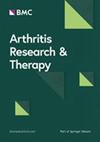生物信息学分析和实验验证揭示了系统性红斑狼疮患者干扰素特征单核细胞亚群的扩增
IF 4.6
2区 医学
Q1 Medicine
引用次数: 0
摘要
系统性红斑狼疮(SLE)是一种以慢性炎症和多器官损害为特征的复杂自身免疫性疾病。SLE发病的一个中心因素是I型干扰素(IFN-I)的过量产生,它会导致免疫失调。单核细胞是免疫系统的关键组成部分,对IFN-I的产生有重要作用。然而,它们在SLE中的具体作用仍不完全清楚。本研究利用生物信息学和统计学分析,包括稳健秩聚集(RRA)、DESeq2和limma,分析SLE患者和健康对照外周血单核细胞(PBMCs)和单核细胞的转录组数据。使用Seurat R包处理单细胞RNA测序(scRNA-seq)数据,以识别和表征具有强ifn驱动基因特征的单核细胞亚群。采用流式细胞术验证关键发现,使用CD14、SIGLEC1和IRF7等标记物确认单核细胞亚群组成。我们的研究发现,SLE的单核细胞经历ifn驱动的转录重编程,关键干扰素特征基因(ISGs)上调,形成SLE相关单核细胞特征(SLERRAsignature)。此外,SLE患者单核吞噬细胞亚群的组成发生了变化,在耀斑组中CD14Mono8亚群的比例有增加的趋势。SLE 13个单核吞噬细胞亚群中差异表达基因(DEGs)以ISGs为主,重症患者ISGs表达较高。我们在这些亚群中发现了SIGLEC1+IRF7+单核细胞,并首次在健康个体的外周血中发现了这组细胞。在SLE中,代表SIGLEC1+IRF7+单核细胞的基因集的富集评分与SLE的严重程度呈正相关。最后,流式细胞术证实,SLE患者pbmc中CD14+SIGLEC1+IRF7+单核细胞的频率高于健康对照组。我们的研究发现,产生ifn - i的单核细胞亚群的扩增,特别是CD14+SIGLEC1+IRF7+亚群,在SLE发病机制中起着至关重要的作用。该亚群可作为控制SLE的潜在生物标志物和治疗靶点。本文章由计算机程序翻译,如有差异,请以英文原文为准。
Bioinformatic analysis and experimental verification reveal expansion of monocyte subsets with an interferon signature in systemic lupus erythematosus patients
Systemic lupus erythematosus (SLE) is a complex autoimmune disorder characterized by chronic inflammation and multi-organ damage. A central factor in SLE pathogenesis is the excessive production of type I interferon (IFN-I), which drives immune dysregulation. Monocytes, key components of the immune system, significantly contribute to IFN-I production. However, their specific roles in SLE remain incompletely understood. This study utilized bioinformatics and statistical analyses, including robust rank aggregation (RRA), DESeq2, and limma, to analyze transcriptome data from peripheral blood mononuclear cells (PBMCs) and monocytes of SLE patients and healthy controls. Single-cell RNA sequencing (scRNA-seq) data were processed using the Seurat R package to identify and characterize monocyte subsets with a strong IFN-driven gene signature. Flow cytometry was employed to validate key findings, using markers such as CD14, SIGLEC1, and IRF7 to confirm monocyte subset composition. Our research has found that monocytes in SLE undergo IFN-driven transcriptional reprogramming, with the upregulation of key interferon signature genes (ISGs), forming the SLE-Related Monocyte Signature (SLERRAsignature). Moreover, the composition of mononuclear phagocyte subsets in SLE patients changes, with an increase trend in the proportion of the CD14Mono8 subset in the flare group. The differentially expressed genes (DEGs) in 13 mononuclear phagocyte subsets of SLE are mainly ISGs, and the expression of ISGs is higher in severe patients. We identified SIGLEC1+IRF7+ monocytes among these subsets and for the first time discovered this group of cells in the peripheral blood of healthy individuals. In SLE, the enrichment score of the gene set representing SIGLEC1+IRF7+ monocytes is positively correlated with the severity of SLE. Finally, flow cytometry confirmed that the frequency of CD14+SIGLEC1+IRF7+ monocytes in PBMCs was higher in SLE compared with healthy controls. Our study found that the expansion of IFN-I-producing monocyte subsets, particularly the CD14+SIGLEC1+IRF7+ subset, plays a crucial role in SLE pathogenesis. This subset may serve as a potential biomarker and therapeutic target for managing SLE.
求助全文
通过发布文献求助,成功后即可免费获取论文全文。
去求助
来源期刊

Arthritis Research & Therapy
RHEUMATOLOGY-
CiteScore
8.60
自引率
2.00%
发文量
261
审稿时长
14 weeks
期刊介绍:
Established in 1999, Arthritis Research and Therapy is an international, open access, peer-reviewed journal, publishing original articles in the area of musculoskeletal research and therapy as well as, reviews, commentaries and reports. A major focus of the journal is on the immunologic processes leading to inflammation, damage and repair as they relate to autoimmune rheumatic and musculoskeletal conditions, and which inform the translation of this knowledge into advances in clinical care. Original basic, translational and clinical research is considered for publication along with results of early and late phase therapeutic trials, especially as they pertain to the underpinning science that informs clinical observations in interventional studies.
 求助内容:
求助内容: 应助结果提醒方式:
应助结果提醒方式:


